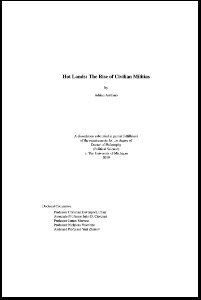By The Digital Citizens Alliance
Digital platforms enabled the disturbing rise of domestic extremism, culminating with the January 6 attack on the U.S. Capitol. Militia groups use social media networks to plan operations, recruit new members and spread anti-democracy propaganda, a new Digital Citizens Alliance (Digital Citizens) and Coalition for a Safer Web (CSW) investigation has found.
Taking a page from Jihadists, these extremist groups operate along the fringes of where platforms such as YouTube, Twitter, Facebook, and Instagram will let them. Federal prosecutors investigating the Capitol riot revealed how militia groups used social media platforms to coordinate and prepare for possible conflict with Antifa. But the joint Digital Citizens / CSW investigation found the use of platforms goes well beyond tactical planning. Militias rely on the platforms to share their beliefs and ideology and recruit new members. The militias get a boost from their ideological simpatico with mis/disinformation groups like QAnon, which provides oxygen that militias use to fan the flames.
The anti-government militia movement first emerged after the 1992 Ruby Ridge standoff, the 1993 Waco siege, and the Oklahoma City Bombing on April 19, 1995. After Oklahoma City, U.S. law enforcement cracked down on domestic terrorism and the militia movement. In 1996, the Southern Poverty Law Center (SPLC) reported 858 militia groups with up to 50,000 active members. The 9/11 terrorist attacks shifted focus to global threats and led to a dormant period for militias. But domestic extremists such as the Proud Boys, the Boogaloo Bois, the Three Percenters, and the Oath Keepers have reinvigorated the movement – aided in large part by digital platforms. In 2020, according to research by The Washington Post, the number of domestic terrorism incidents in the United States had doubled from what it was in 1995. But the joint Digital Citizens / CSW investigation found the use of platforms goes well beyond tactical planning. Militias rely on the platforms to share their beliefs and ideology and recruit new members. The militias get a boost from their ideological simpatico with mis/disinformation groups like QAnon, which provides oxygen that militias use to fan the flames.
The anti-government militia movement first emerged after the 1992 Ruby Ridge standoff, the 1993 Waco siege, and the Oklahoma City Bombing on April 19, 1995. After Oklahoma City, U.S. law enforcement cracked down on domestic terrorism and the militia movement. In 1996, the Southern Poverty Law Center (SPLC) reported 858 militia groups with up to 50,000 active members. The 9/11 terrorist attacks shifted focus to global threats and led to a dormant period for militias. But domestic extremists such as the Proud Boys, the Boogaloo Bois, the Three Percenters, and the Oath Keepers have reinvigorated the movement – aided in large part by digital platforms. In 2020, according to research by The Washington Post, the number of domestic terrorism incidents in the United States had doubled from what it was in 1995.
Washington, DC: Digital Citizens Alliance, 2021. 56p.





